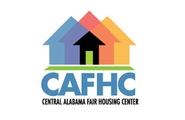

Lending discrimination occurs when a lender (bank or otherwise) makes an adverse action against someone based on a protected class — groups protected from discrimination under the Equal Credit Opportunity Act and the Fair Housing Act. According to the Equal Employment Opportunity Commission, every U.S. citizen is a member of some protected class.
When someone is discouraged to apply for a mortgage based on their race, for example, that’s against the federal laws. If all else is equal but a Hispanic or African American borrower pays a higher APR on a personal loan than a white borrower under the same lender, it could be considered lending discrimination.
The ECOA prohibits lending discrimination on various factors, including:
The FHA expands that protection to include familial status and forbids discrimination in any part of residential real estate transactions. Therefore, fair lending is available to all. Fair lending prohibits lenders from considering any of the above-stated criteria when applying for residential mortgage loans.
The following are examples of lending discrimination. They are curated from the U.S. Department of Housing and Urban Development white paper Guide to Fair Lending.
There are a number of protections in place at both the federal and state level to protect home-buying applicants against lending discrimination.
The Office of Fair Housing and Equal Opportunity enforces the federal Fair Housing Act and state and local enforcement agencies enforce fair housing laws that are substantially equivalent to the federal Fair Housing Act. There are other laws, including the Equal Credit Opportunities Act, which also protect rights, though they are not enforced by HUD.
For more information about the Fair Housing Act, please visit the HUD website, or browse the library of resources available on the Central Alabama Fair Housing Center’s website.
It can be tough to identify if an applicant has been discriminated against in the lending process, however, it’s still important to understand signs of lending discrimination so that each applicant can remain vigilant.
Start by speaking to different lenders – get various quotes and compare rates. That way, the applicant can identify if one of the quotes is substantially higher than the rest. Furthermore, in addition to the already stated examples of lending discrimination, remain on the lookout for suspicious practices, such as:
If you believe you have been a victim of lending discrimination, there are a number of steps you can take to ensure that the potential wrong is righted. First and foremost, visit the CAFHC website. We provide education, legal resources, and legal assistance, among a variety of other resources to keep patrons educated, engaged, and in-the-know about all things concerning fair housing. Additional actions include:
Fair lending is a right to every citizen. We want to ensure that each lending applicant is shown the respect and given the rights they deserve.